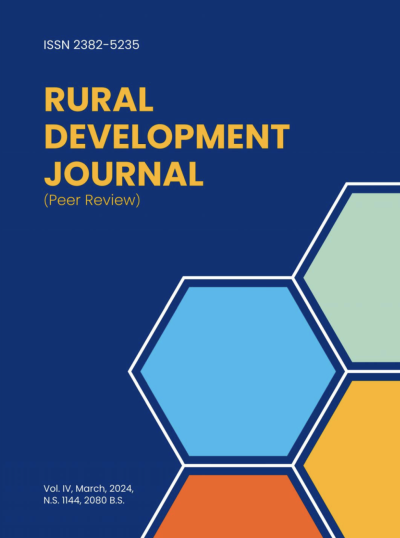Estimation and Projection of Fertility in Nepal
DOI:
https://doi.org/10.3126/rdj.v4i1.64025Keywords:
fertility, national data, Arriga method, changing P/F ratio, logisticAbstract
The text discusses the importance of indirect estimation techniques in understanding population dynamics, particularly in countries with limited or flawed data like Nepal. Indirect methods offer valuable insights into fertility and mortality rates when direct measures are unavailable or unreliable. Techniques like Brass P/F ratio and the logistic curve function are explored for estimating fertility trends and projecting Total Fertility Rates (TFR). These methods involve meticulous analysis and adjustment for data inconsistencies. Indirect estimation plays a crucial role in bridging data gaps and informing demographic analysis and planning, especially in regions undergoing demographic transition. Through these techniques, researchers gain valuable insights into fertility dynamics, contributing to a better understanding of population trends. The text explores fertility estimation in Nepal using Arriaga's method, analyzing data from the 2011 and 2021 censuses. It reveals disparities in lifetime fertility indices, particularly after age 20, with higher rates among women aged 20-24 and 25-34, tapering towards the end of the reproductive span. Arriaga's adjustments address issues like misreporting of children's ages, aiming to rectify discrepancies and estimate the Total Fertility Rate (TFR) for both years. Additionally, the study discusses fertility projections for 2026 and 2031, highlighting the importance of trend extrapolation models and the logistic curve for accurate estimation. The findings underscore the significance of meticulous adjustments and reliable methodologies in understanding fertility dynamics in Nepal.




